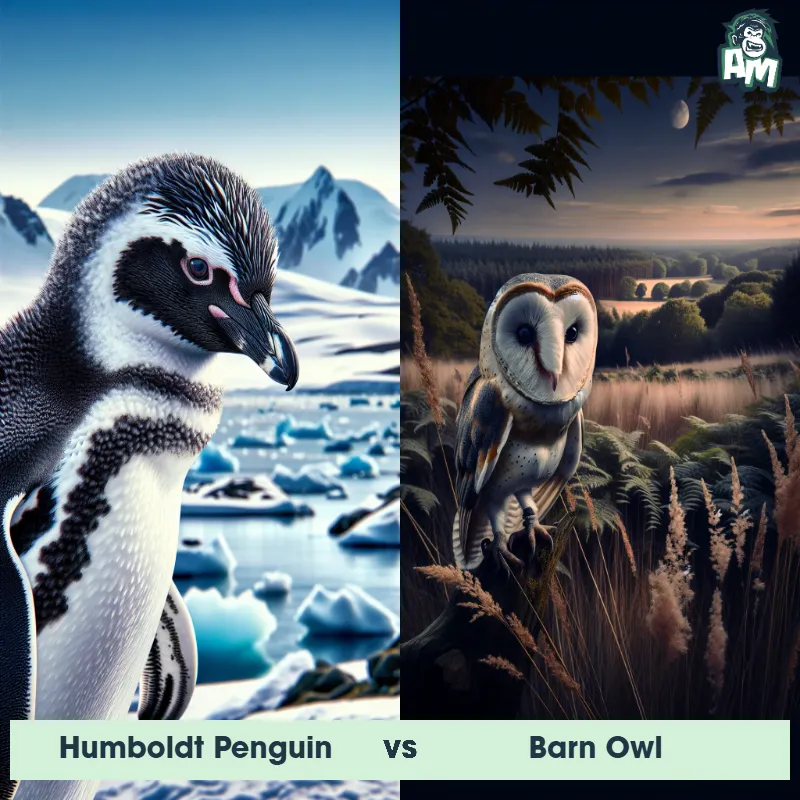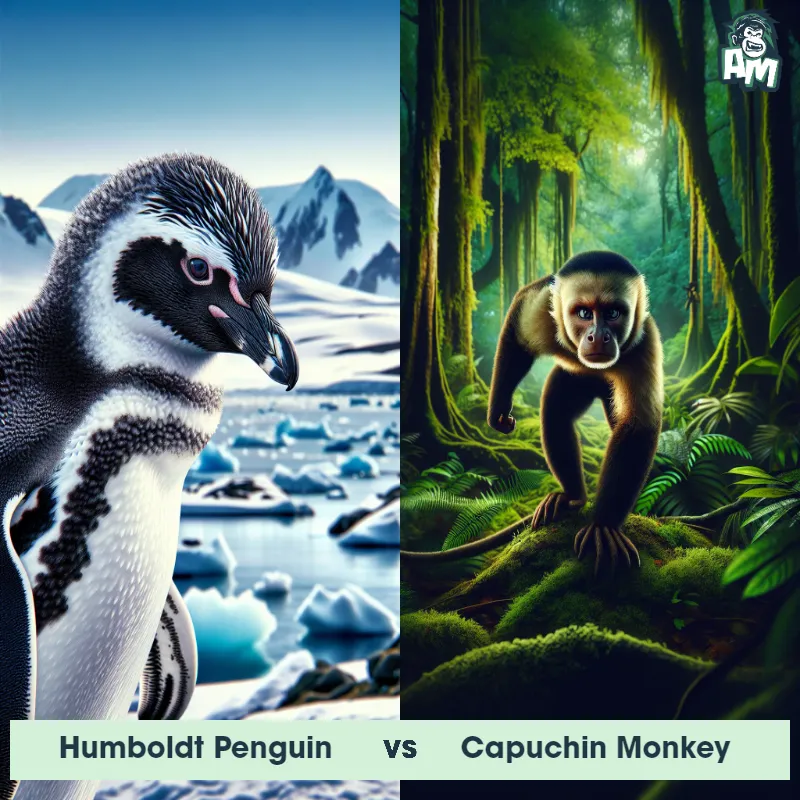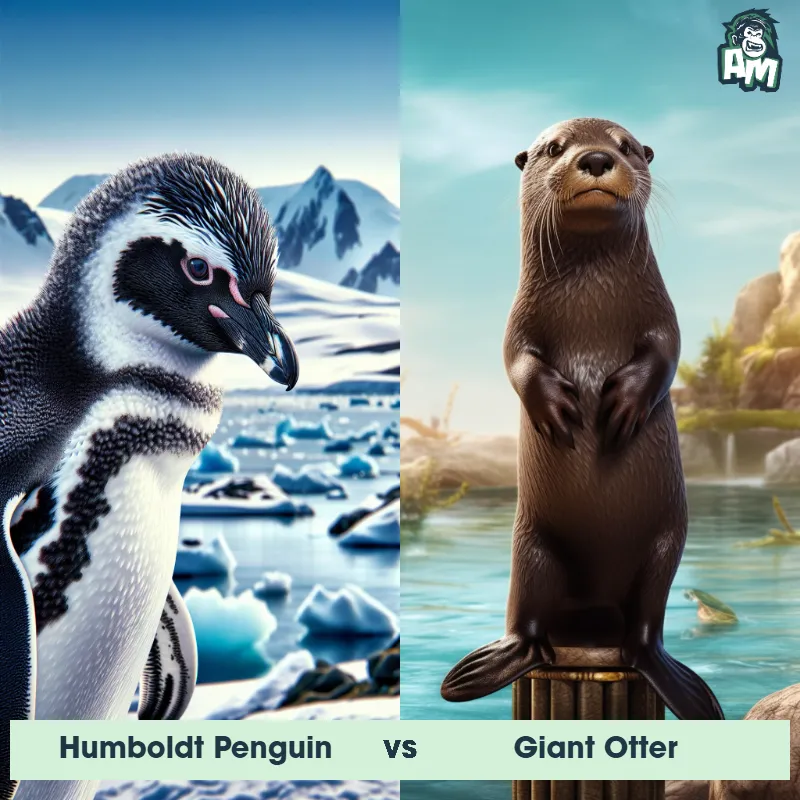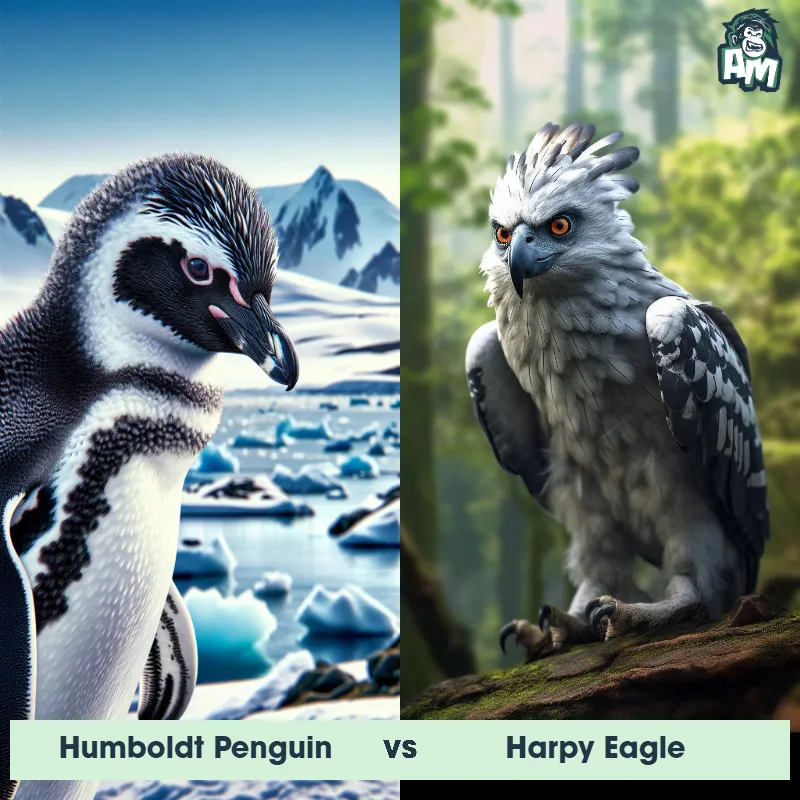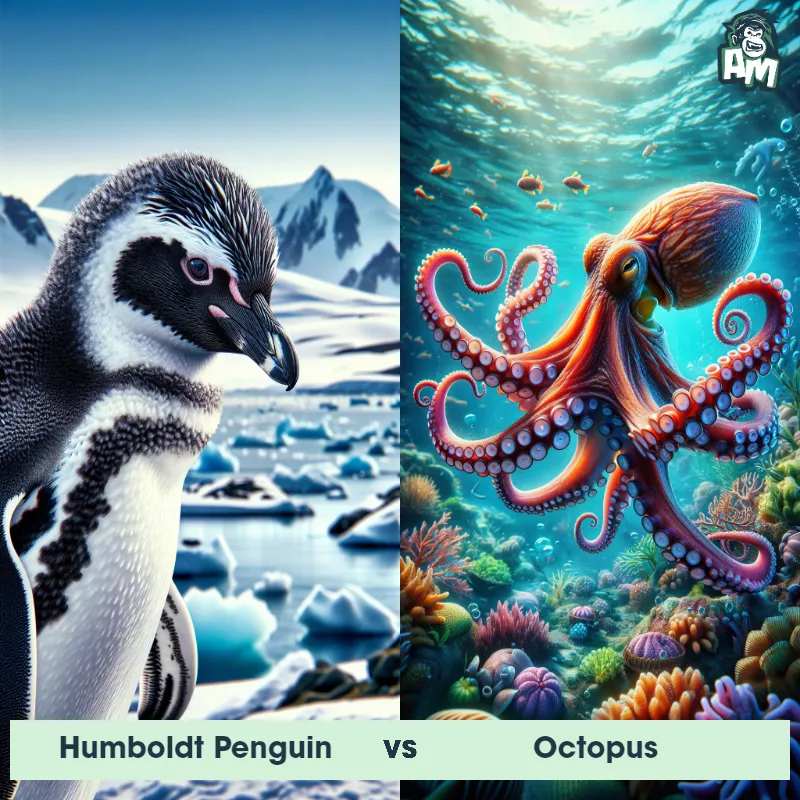The Humboldt Penguin
The Humboldt Penguin, also known as the Peruvian Penguin, is a medium-sized bird found primarily on the coast of Peru and Chile. They have a distinctive appearance with a white belly and black back, as well as a black band across their chest. Humboldt Penguins also have pink feet and a hooked beak to help them catch fish. They are known for their excellent swimming abilities, with their streamlined bodies and strong wings allowing them to navigate through the water with ease.

| Humboldt Penguin | |
|---|---|
| Size | 26-28 inches (66-71 centimeters) in height |
| Weight | 8-13 pounds (3.6-5.9 kilograms) |
| Speed | 20mph (32km/h) |
| Key Strength | Agility in water |
| Biggest Weakness | Lack of wingspan |
| Scientific Name | Spheniscus humboldti |
| Family | Spheniscidae |
| Habitat | Coastal areas, rocky shores, and islands |
| Geography | Primarily found in Chile and Peru |
| Diet | Fish, squid, and small crustaceans |
| Lifespan | 15 years - 20 years |

The Humboldt Penguin
The Humboldt Penguin, also known as the Peruvian Penguin, is a medium-sized bird found primarily on the coast of Peru and Chile. They have a distinctive appearance with a white belly and black back, as well as a black band across their chest. Humboldt Penguins also have pink feet and a hooked beak to help them catch fish. They are known for their excellent swimming abilities, with their streamlined bodies and strong wings allowing them to navigate through the water with ease.
Fun Fact: Humboldt Penguins are excellent communicators, using a combination of vocalizations and body movements to interact with each other.
| Humboldt Penguin | |
|---|---|
| Size | 26-28 inches (66-71 centimeters) in height |
| Weight | 8-13 pounds (3.6-5.9 kilograms) |
| Speed | 20mph (32km/h) |
| Key Strength | Agility in water |
| Biggest Weakness | Lack of wingspan |
| Scientific Name | Spheniscus humboldti |
| Family | Spheniscidae |
| Habitat | Coastal areas, rocky shores, and islands |
| Geography | Primarily found in Chile and Peru |
| Diet | Fish, squid, and small crustaceans |
| Lifespan | 15 years - 20 years |
Humboldt Penguin Matchups
We use AI to simulate matchups between the Humboldt Penguin and other animals. Our simulation considers size, strength, and natural predatory behaviors to determine the most likely outcome.

Can't find the Matchup you want?
Create Your Own MatchupHumboldt Penguin: Diet, Predators, Aggression, and Defensive Behaviors
What do Humboldt Penguins eat?
Humboldt Penguins primarily feed on fish such as sardines, anchovies, and squid. They are skilled hunters, swimming at high speeds to catch their prey underwater. Occasionally, they may also consume small crustaceans and krill.
Do Humboldt Penguins have any predators?
Yes, Humboldt Penguins face threats from various predators in their natural habitat. Sea lions and fur seals are known to prey on these penguins, especially when they are vulnerable while swimming near the shore. Sharks and predatory birds like skuas and gulls also pose a danger to Humboldt Penguins.
Are Humboldt Penguins aggressive?
Humboldt Penguins are not known for being particularly aggressive towards humans or each other. They are social animals that live in colonies, engaging in activities like preening and vocalizing to communicate with one another. However, they may display territorial behavior when defending their nests or mates.
Do Humboldt Penguins fight?
Humboldt Penguins may engage in physical confrontations, especially during breeding season when competition for mates and nesting sites is heightened. These fights can involve beak fencing, flapping wings, and vocal displays. The purpose of these clashes is typically to establish dominance rather than to cause harm.
How do Humboldt Penguins defend themselves?
Humboldt Penguins use several strategies to defend themselves against predators or rivals. When confronted by a threat, they may vocalize loudly to alert others in the colony, making it harder for the predator to approach unnoticed. Additionally, they can use their sharp beaks and agility to evade attacks or deter potential aggressors.
What is the biggest weakness of Humboldt Penguins in a fight?
The biggest weakness of Humboldt Penguins in a fight is their relatively small size and lack of physical strength compared to some of their predators or larger competitors. While they can be agile and use their beaks in defense, they may struggle to overpower larger opponents or fend off determined attackers. Therefore, their best defense is often to rely on group behavior and vocal warnings to deter threats.
Fun Fact: Unlike many other penguins, Humboldt Penguins do not build nests. Instead, they dig burrows in the guano seabird excrement that accumulates on the rocky shoreline.
Fun Fact: Humboldt Penguins are highly adaptable and can not only swim but also walk and hop on land, using their flippers and feet to move around.



